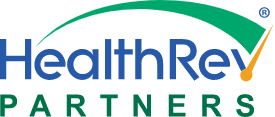
Update: According to The Centers for Medicare and Medicaid Services, “As finalized in the CY 2022 Home Health Rule, CMS implemented OASIS E on January 1, 2023 to initiate the capture of data for the Transfer of Health Information to Provider Post-Acute Care measure, the Transfer of Health Information to Patient-PAC measure, and certain Standardized Patient Assessment Data Elements. Implementation was previously delayed to provide maximum flexibility for providers of Home Health Agencies to respond to the COVID-19 Public Health Emergency.”
These modifications are the most significant updates to the OASIS to date. As part of the standardized data collection efforts across the post-acute care services, OASIS-E introduced several new sections, including a BIMS section specifically designed to assess patient cognitive patterns, behavior, and mood.
What is BIMS?
BIMs is an acronym for Brief Interview for Mental Status and is located under section C of the OASIS-E that went into effect January 1, 2023. Prior versions of the OASIS have not included a performance based cognitive assessment. The BIMS includes 5 OASIS items used to determine if a structured cognitive interview should be conducted, and if so, what is the patient’s temporal orientation and cognitive ability to repeat and recall words spoken by the assessing clinician with/without cueing. BIMS alone is not meant to diagnose a cognitive disorder, but it can provide important baseline information about cognitive function and indicate if additional follow-up with a physician would be beneficial to the patient.
How does BIMS work?
BIMS is a simple screening that can aid in detecting the presence of cognitive impairment in older adults. Determining cognitive function is essential to creating a valid plan of care and achieving quality outcomes. It is one determining factor in how patients can self-manage their disease state and it’s linked to a higher rate of hospital readmission in Medicare patients. Thus, it’s very important that patients with cognitive impairment have caregivers that can learn how to best manage their disease state.The first item in Section C is used to determine if a structured cognitive interview (BIMS) should be conducted at all. Without an attempted structured cognitive interview, some patients may appear to be more cognitively intact than they actually are. This might lead to a patient being mislabeled based on their appearance or assumed diagnosis. A structured cognitive test is more accurate and reliable than observation alone and will efficiently provide insight into the patient’s current condition that will enhance good care. CMS has proposed including cue cards for administering the BIMS in written format, as well as specific guidance on the individual items. It is important that interaction with the patient be done so in their preferred language. It is equally important that the clinician assures the patient can hear them and/or has access to their preferred method for communication. If the patient appears unable to communicate, the clinician should offer alternatives such as writing, pointing, sign language, or cue cards.The BIMS is a simple test where a clinician says three words and asks the patient to remember and repeat them. For example, they would say, “sock, blue, bed.” S/he may repeat these same words using cues. For instance, CMS says, a sock is something you wear, blue is a color, and a bed is a piece of furniture. The clinician repeats the words up to two more times. Next, they ask the patient what year it is right now. Then they ask what month it is, and finally, what day of the week it is right now.After this, the clinician then tests the patient’s recall. They would ask, “Let’s go back to an earlier question. What are those three words that I asked you to repeat?” If the patient is unable to remember a word, the clinician gives the patient a cue for the word.
How do you score the BIMS test?
Upon completion of the BIMS test, one point is assigned for each word the patient initially repeated without cues. Zero points are assigned if the patient didn’t repeat words correctly. The clinician will document if the patient stated the correct year (three points), if the patient was off by a year (two points), if the patient was off by two to five years (one point), or if the patient was off by greater than five years/didn’t answer.Next, the clinician documents if the patient provides the correct month — within five days (two points). Otherwise, s/he documents if the patient was off by 6 days to 1 month (one point) or if the patient was off by more than a month or didn’t answer. The clinician then documents if the patient identified the correct day of the week (one point) or incorrect/doesn’t answer.
When the patient is asked to recall the words, two points are assigned for each correct answer without a cue and one point for each correct answer with a cue.Nonsensical responses, incorrect answers, and questions the patient chooses not to answer should be coded as zero.
The patient can score 0 to 15 points on the test. A score of 13 to 15 suggests the patient is cognitively intact, 8 to 12 suggests moderately impaired and 0 to 7 suggests severe impairment. As with any other test, clinicians should follow-up with the patient’s physician to verify a diagnosis or to further evaluate the patient if necessary.
The BIMS is currently used in skilled nursing facilities and inpatient rehabilitation facilities, so introducing the test in home health means that when a patient is transferred from one setting to another, agencies will fluidly receive this information and it’ll make it easier to develop a care plan that fits the patient’s specific capabilities and needs.
How do you interpret the BIMS score?
If the patient has a confirmed diagnosis associated with cognitive decline, the BIMS can establish a baseline for future assessments. A BIMS score of 12 or less indicates a cognitive decline. If there is no documentation of a diagnosis but the patient has a positive BIMS screening, further evaluation is warranted.
Need help with your OASIS review?
Need help with your OASIS review? Our certified coding and OASIS review experts are knowledgeable and highly experienced in navigating the complexities of home health. As a result, you’ll reduce documentation errors and expedite claims submission. Contact us to learn more.


